This week on TFB’s Wheelgun Wednesday, we’ll be taking a look at the concept of the revolver reloading aid, Speed Strips, and the Pros & Cons thereof. When we talk about carrying a revolver for our protection, we really can’t leave out the topic of reloading since most concealable wheelguns only carry five or six rounds. Lord willing, five or fewer rounds will be all that one needs to solve a deadly force encounter, but if not, you’re probably going to have to reload. Enter the concept of the Speed Strip, which is a flexible strip of plastic or rubber (or a substance in between) that holds extra cartridges to reload your cylinder from. Since the speed strip holds the rims of the cartridges, two cartridges can be loaded bullet first into two chambers of the cylinder and peeled off from the Speed Strip at a time. Let’s peel this onion.
Revolver Reloads @ TFB:
- The Pros And Cons Of Moon Clips
- A Unique Speedloader for Revolvers- The Link Loader
- NEW Obsolete Arms Smokewagon Speedloader
- TFB Review: CK Tactical’s Ripcord Speedloader For Revolvers
- Speedloaders for when you need to shoot a herd of Elephants
- One-Handed Revolver Reload – Revisited
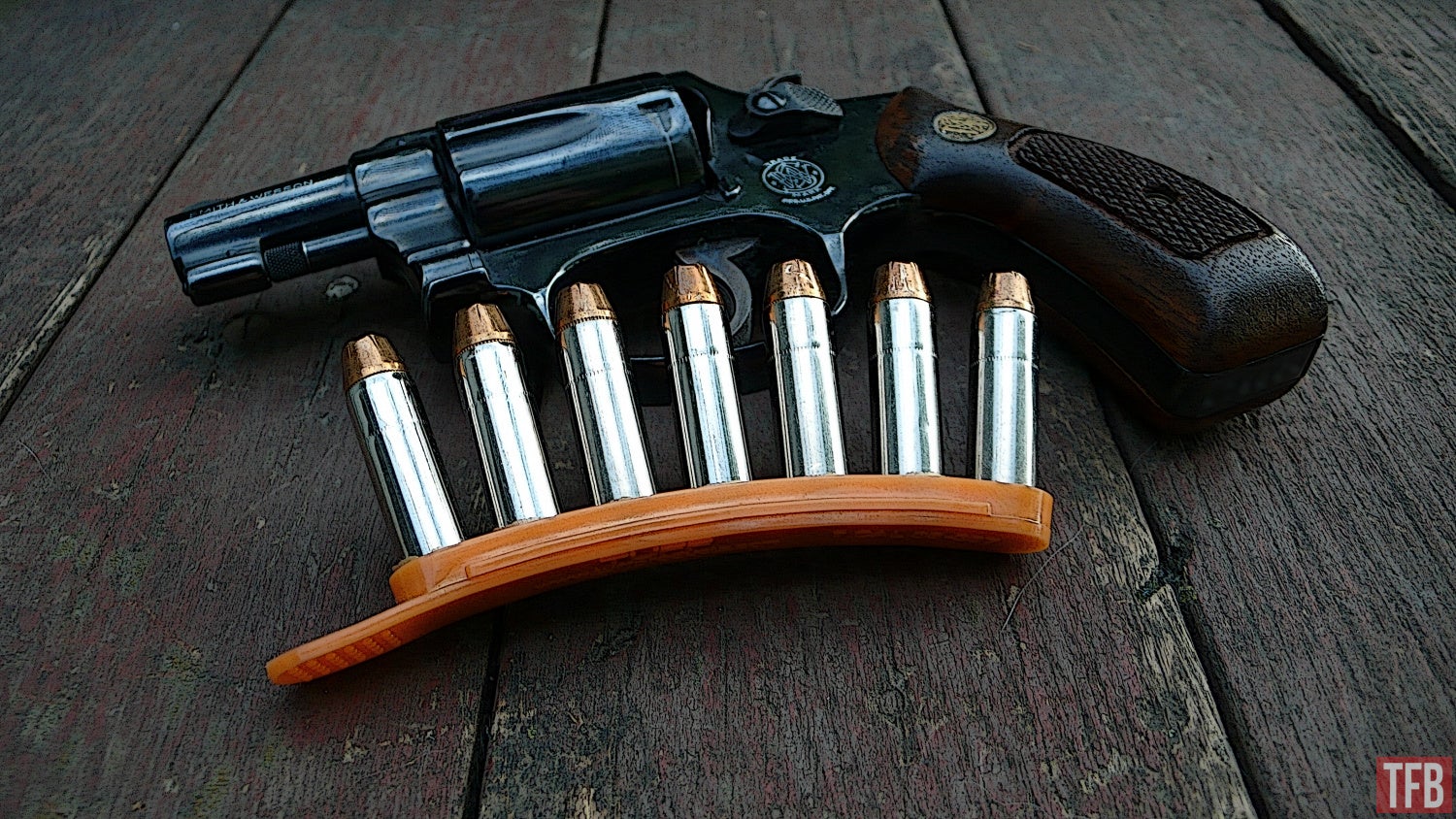
DISCLAIMER & COMPATIBILITY
I should point out that the term “Speed Strip” is brand specific to the original design from Bianchi in the 1960s, but has become synonymous when talking broadly about the concept. Other manufacturers have marketed similar names, such as Tuff Products’ QuickStrips, or DeSantis’ Swift Strips, so it’s no surprise that the original, long-standing name stuck.

Image credit: Safariland and Bianchi
Bianchi and DeSantis Gunhide have mostly stuck with the concept’s core offering, limiting the options to .38 Special, .357 Magnum, and 9mm, as well as .44 Special, .44 Magnum, and .45 calibers, and produce them for six rounds only. However, Tuff Products has produced their QuickStrips for 43 calibers (including 40mm grenades for the largest modern revolvers!), 20 of which are revolver-specific calibers, and depending on caliber, are available in 3 to 10 round strips. When it comes to certain calibers such as .32, .38, 9mm, .357, and .45, the cartridge compatibility list would probably skyrocket, but I’ll let someone else work those numbers.

A small example of overlapping compatibility. Left to right: .38 S&W, .38 Special, .357 Magnum, .40 S&W, 10mm Auto.
Another newcomer to the strips of speed are the Zeta6 brand, named the J-PAK and K-PAK which are based on the S&W J and K frames, so their sizing is more specifically tailored to certain cylinder dimensions, rather than the traditional single strip. Due to that fact, I’m not really including them in my Pros & Cons list, as I believe they bridge the gap between the Speed Strips and speedloaders, with a twist of half-moon clips. I’d love to review them though, for a future Wheelgun Wednesday.

Image credit: Zeta6
PROS OF SPEED STRIPS
We might as well start off with the best aspect of Speed Strips, which is their concealability. The fact that Speed Strips are, well, a single strip of material, means their flat profile can easily slip into a pocket or special pouch on the belt. This slim design makes the concealment factor a step above the bulkier cylindrical makeup of the speedloader, which is harder to conceal in a pocket and on the belt. Another advantage of the design is that they are inherently safe when loaded with ammunition because the strip completely covers and cushions the primers. Ideally, concealed carry reloads should have their own pocket, but if you have to, you could place them with other objects in your pockets and not worry about the primers being set off.
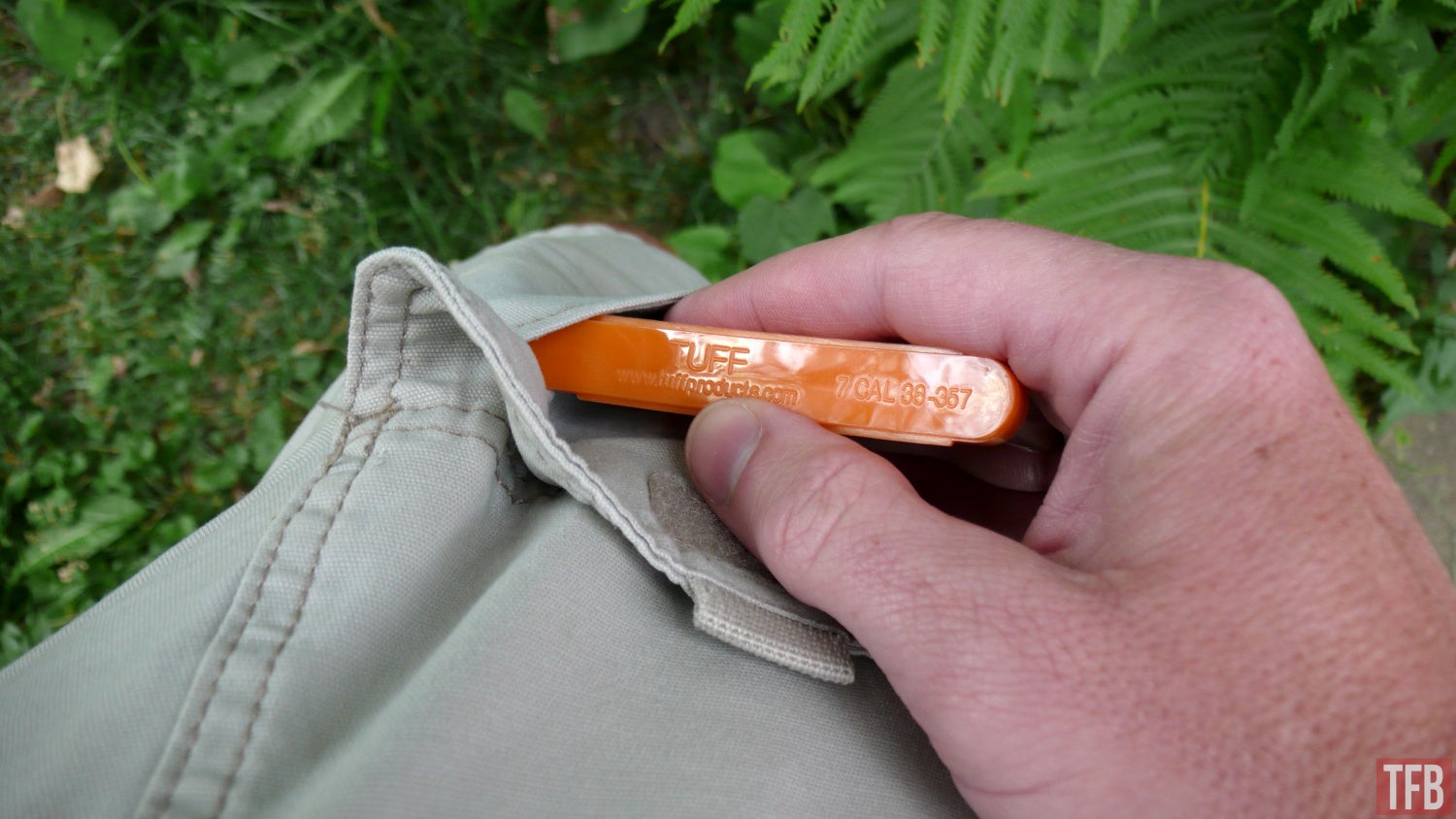
Another boon for the Speed Strips is that they work with any same-caliber revolvers, regardless of either revolver’s cylinder size. Thus, you could use the loading strips for five, six, seven, and eight-shot revolvers, without having to invest in loading devices specific to each revolver. A similar advantage in that vein is that Speed Strips are quite affordable. They typically range from $8 to $14 for a set of two strips. Compared to speedloaders which cost roughly $12 each.


Since Speed Strips are able to load two chambers at a time, this makes reloading a revolver quicker than loading individual cartridges. For quite some time, I carried my reloads in loops on my belt. I was able to load them pretty quick two at a time, but I kept having to go back to my belt each time, whereas with Speed Strips, all of your cartridges are already in your hand and in your “workspace” as some firearms instructors would say. One exception would be the Zeta6 strips that have the ability to let you load three at a time.

NEUTRALS
One neutral point to add is the debate about how to load up a Speed Strip, I know what you’re thinking, ‘did he load six shots or only four?’ Well, to tell you the truth, in all this excitement, I’ve kinda lost track myself. My preference is to load my QuickStrips to capacity, that way I’ve got another cylinder’s worth, plus a couple more rounds, however, some people load as few as four rounds with a space or two for more positive grasping and peeling. If you’ve carried Speed Strips, tell us how you loaded yours in the comment section.

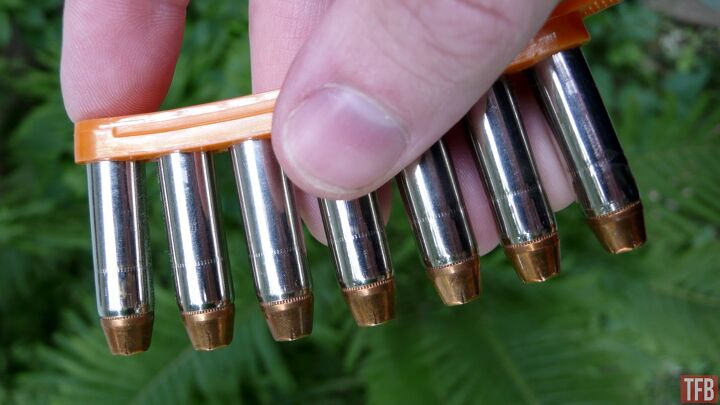
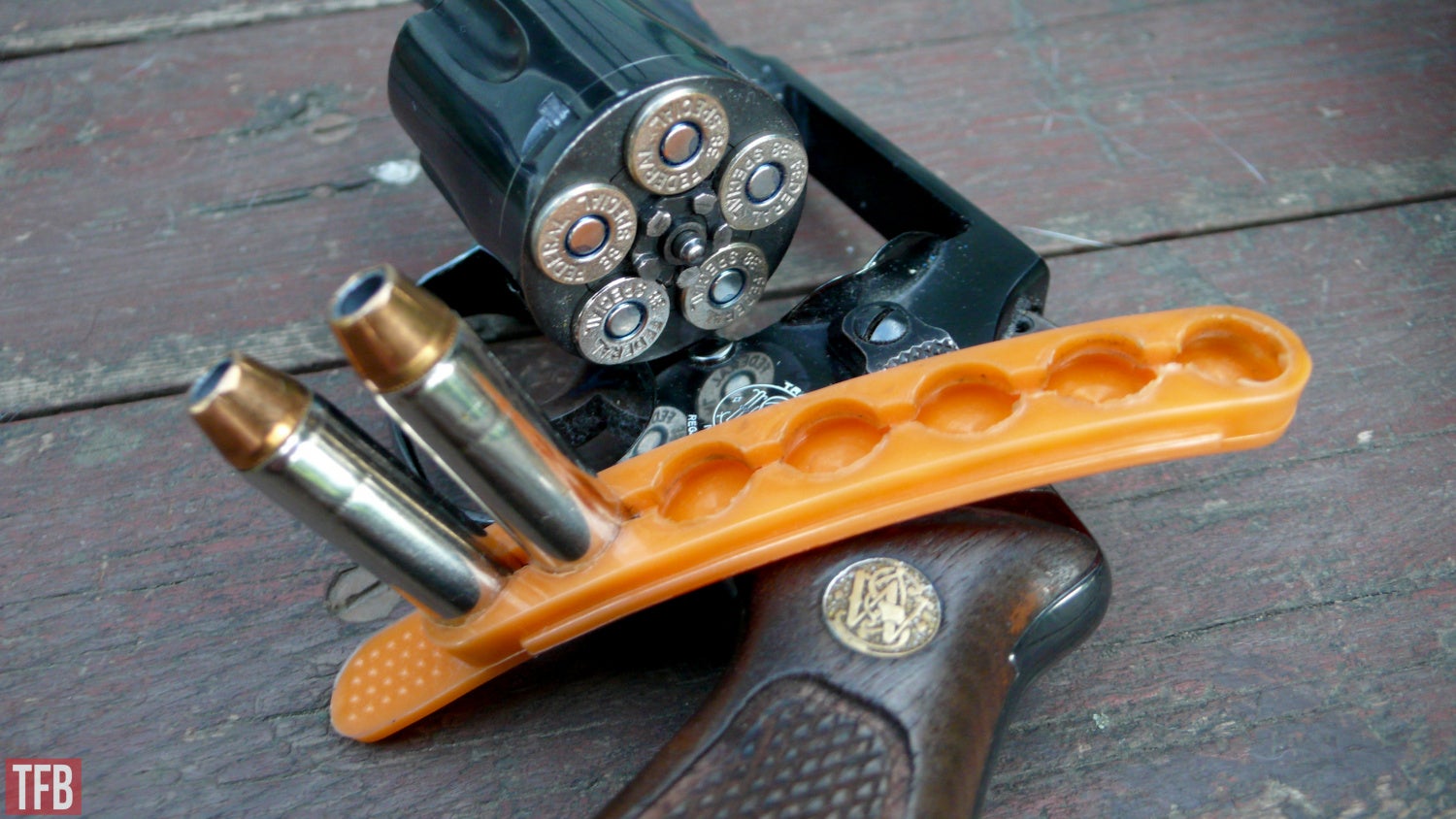
One reason I opted for the Tuff Products QuickStrips is that they offer them in orange, which I decided would be easier to identify in the grass during training. The other reason is that they offer their strips in larger capacities.
CONS OF SPEED STRIPS
Nothing is perfect, thus, we’ve reached the negative side of Speed Strips, the most glaring of which is the fact that they’re not nearly as quick to reload a revolver as speedloaders or moon clips that can charge each cylinder at once. I’ve been fortunate that I haven’t had to reload on any two-way range, but I’d imagine that having to reload from Speed Strips would feel like an eternity.
I can’t speak for the Bianchi, DeSantis, or Zeta6 brand strips, but the Tuff Products QuickStrips can be a pain to put cartridges into. On one occasion, my finger slipped as I was trying to seat a round into it and I somehow bent part of my thumbnail back. However, over time, they’ve loosened up some. Another caution is that when charging the cylinder’s chambers with Speed Strips, make sure you seat the cartridges as far in as you can, otherwise they can pop out when you peel them off the strip.

Lastly, make sure you practice drawing your Speed Strips from whatever pocket or belt pouch you plan to carry them in. As you move around throughout the day, things in pockets tend to change orientation or get caught in the corners. This could be a chance to consider whether or not omitting a round or two from the strip to help grasp it comes into play.
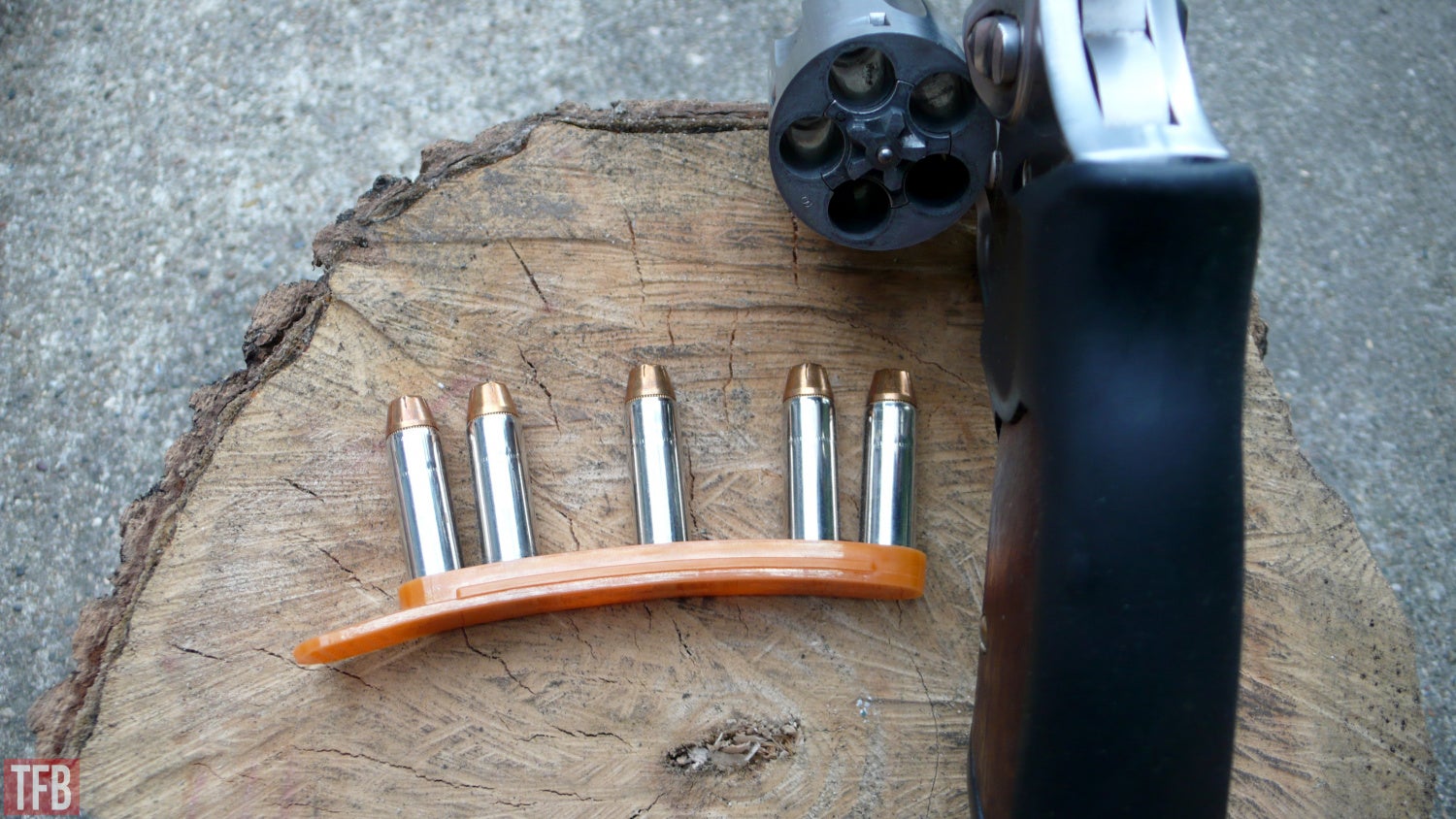
FINAL THOUGHTS
Despite the catchy names involving speed and quickness, Speed Strips, QuickStrips, Swift Strips and such aren’t the fastest tool in the shed pocket, although they’re not the slowest either. As with most things in life, there are tradeoffs to be made, such as concealment over speed. Most people will never need to draw their firearm in anger, let alone shoot it and have to reload it, so having a reloading device that conceals perfectly all day every day might be a fair trade to some.

Thanks for joining us at TFB’s Wheelgun Wednesday! What’s your preferred method to reload a concealed carry revolver? If you’ve used, or are using Speed Strips, which model are you using? Did I miss any pros or cons?
We are committed to finding, researching, and recommending the best products. We earn commissions from purchases you make using the retail links in our product reviews. Learn more about how this works.
 Your Privacy Choices
Your Privacy Choices
